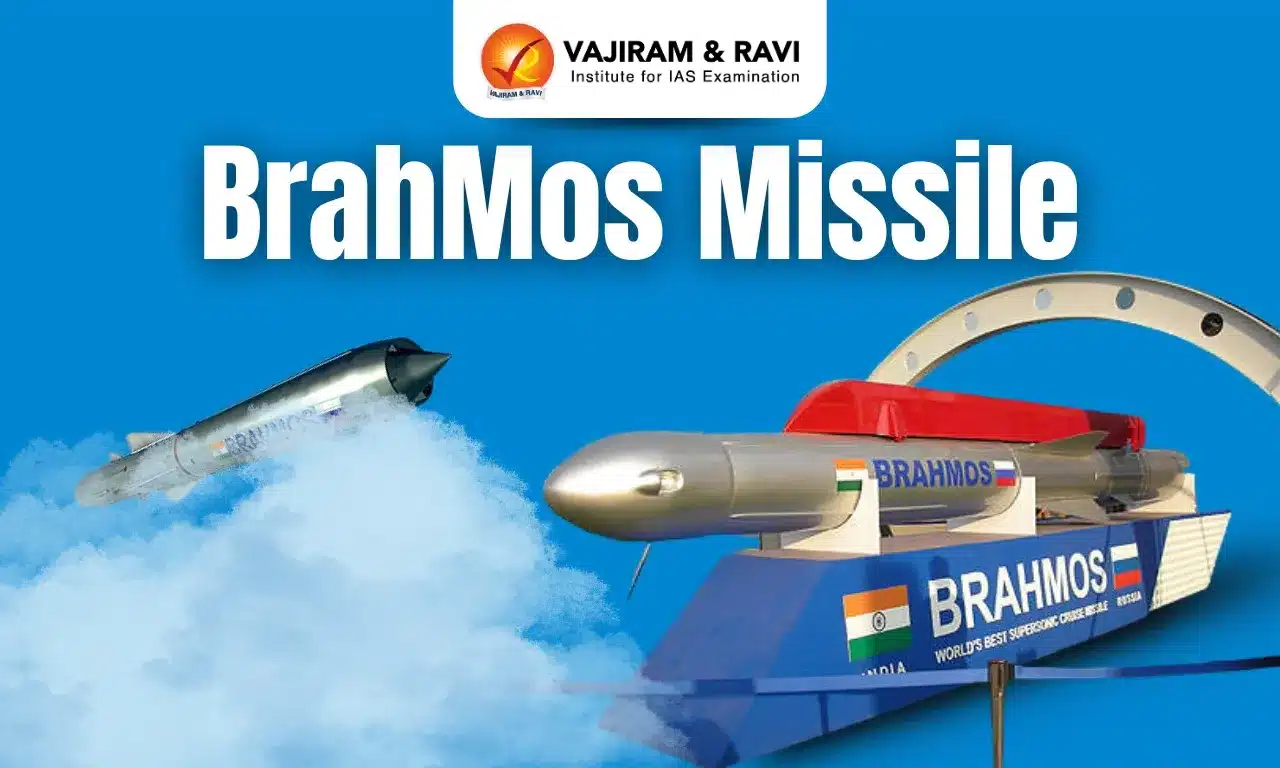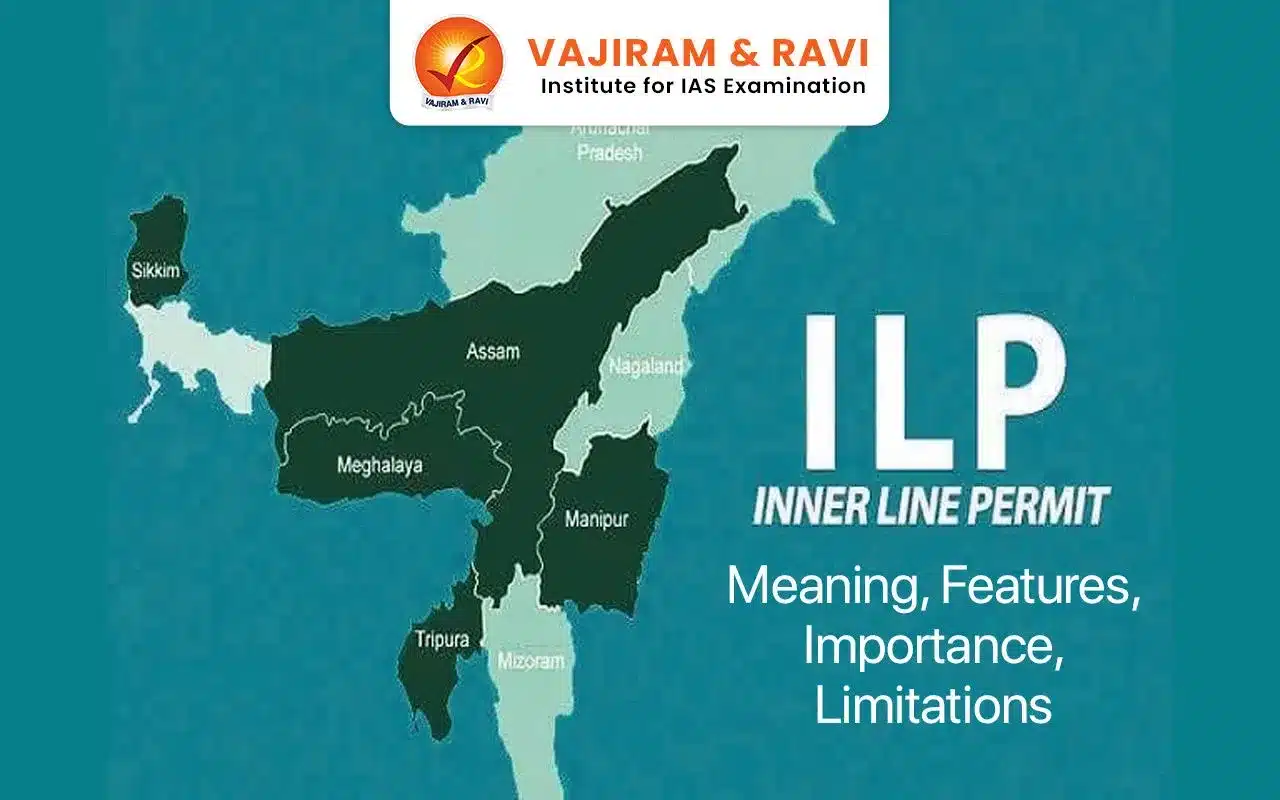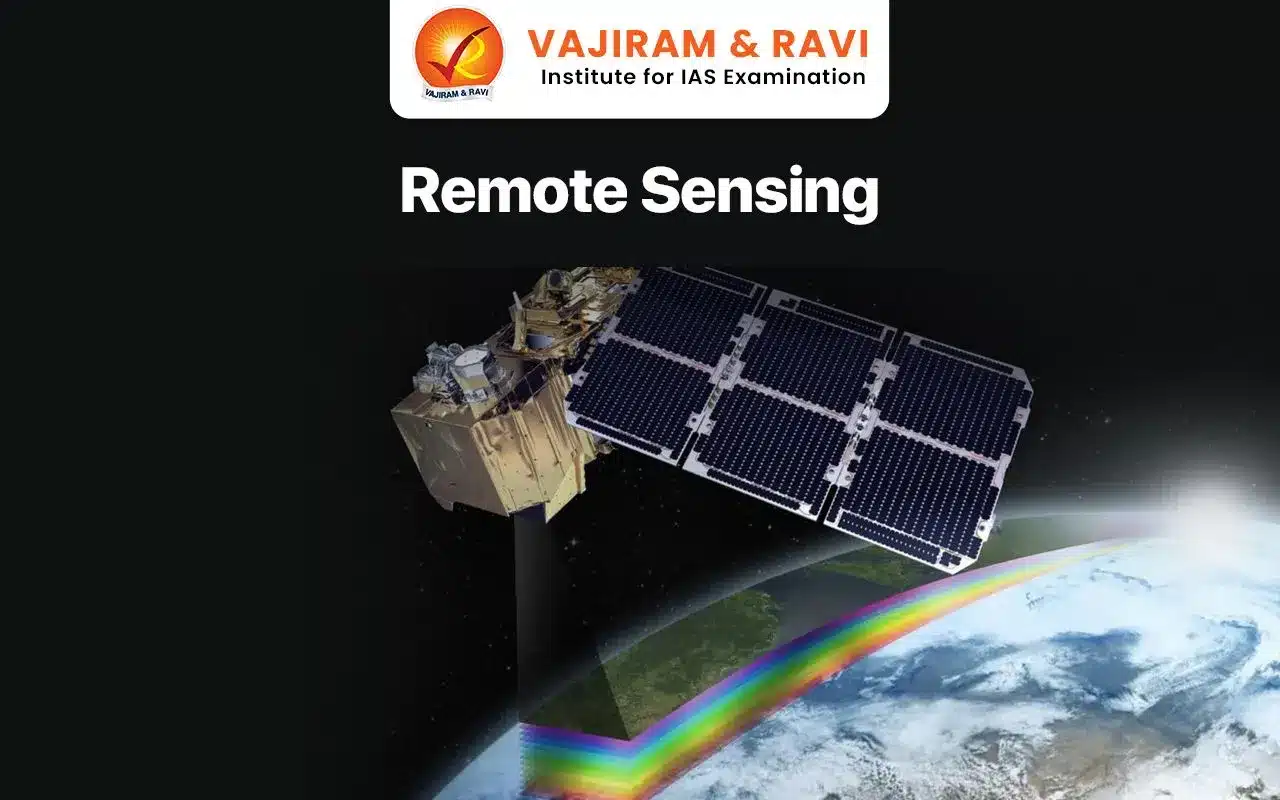BrahMos is a long-range nuclear-capable supersonic cruise missile system. It possesses the capability to be deployed from several platforms, including air, sea, and land. It is capable of travelling at speeds of up to Mach 3, and it is one of the world’s fastest cruise missiles. It was developed by BrahMos Aerospace and tested for the first time in 2001.
BrahMos is named after the rivers Brahmaputra and Moskva (Russia). BrahMos is the potent offensive missile weapon system already inducted into the Armed Forces.
Working of BrahMos Missile
BrahMos is a cruise missile, which is an unmanned self-propelled guided vehicle that flies for the majority of its flight path using aerodynamic lift and whose primary mission is to deliver ordnance or a special payload to a target.
- Launch Platforms: Cruise missiles can be launched from a variety of platforms, including ground, air, sea, and submarine.
- Propulsion and Flight:Jet engines are the primary mode of propulsion for cruise missiles. Most cruise missiles are subsonic and use Turbofan and Turbojet engines. While less common, supersonic and hypersonic cruise missiles utilize Ramjet and Scramjet engines.
- Cruise missiles can fly to their targets at various altitudes as long as they stay within the atmosphere. Most remain close to the Earth's surface, skimming just meters above the ground.
- Their low flight path makes it much more difficult for most radar and sensor systems to detect the missile unless the radar or sensor system is airborne and directed toward the ground.
- Because flying at high altitude saves fuel, it can extend the range of the missile. However, because today's radars and sensors are typically positioned to detect and track high-altitude threats, the missile becomes more vulnerable to missile defence systems.
- Cruise missiles can also combine high and low-altitude flight paths to reap the benefits of both.
- Guidance: Cruise missiles can use a variety of guidance methods to precisely place their ordinance on the desired target while avoiding missile defense systems.
Formation of BrahMos Aerospace
Following the Gulf War of the 1990s, it became increasingly clear that the country needed a cruise missile system. As a result, in 1998, India and Russia signed an intergovernmental agreement in Moscow.
- It paved the way for the formation of BrahMos Aerospace, a joint venture betweenIndia's Defence Research and Development Organization (DRDO) and Russia's NPO Mashinostroyenia (NPOM).
- Objectives: The partnership's goal was to design, develop, manufacture, and market the world's first supersonic cruise missile system-BRAHMOS.
- According to the agreement, the two countries agreed to develop and manufacture the missile jointly, with India owning 50.5% of the JV and Russia owning the remaining 49.5%.
- On June 12, 2001, the first successful launch of BrahMos occurred. The missile was launched from a land-based launcher at the Interim Test Range off the coast of Chandipur in Orissa.
Brahmos Missile Series
BrahMos is a long-range supersonic cruise missile system capable of being launched from land, sea, or air. BrahMos has been jointly developed by DRDO, India, and NPOM, Russia. BrahMos weapon systems have been inducted and are operational with the Indian Armed Forces. BrahMos missile's trajectory cannot be predicted so easily, which makes it difficult to counter missile defences.
BrahMos Supersonic Cruise Missile
Since its first launch in 2001, it has been upgraded several times, with versions tested on land, air, and sea platforms.
| BrahMos Supersonic Cruise Missile | |
 |
- BrahMos is a two-stage missile with a solid propellant booster engine that propels it to supersonic speed before separating.
- Special Features
- It carries a conventional warhead weighing 200 to 300 kg. - The missile has an identical configuration for land, sea, and sub-sea platforms and uses a Transport Launch Canister (TLC) for transportation, storage, and launch. |
BrahMos-NG
A rapid revolution in military technology worldwide has paved the way for the development of yet another futuristic weapon - BrahMos-NG (Next Generation). BrahMos-NG promises to become one of the most potent weapon systems in the future, carrying forward the excellent lineage of the existing world-class BrahMos.
| BrahMos-NG | |
 |
- BrahMos NG is a multi-platform, multi-target, and lightweight weapon system, making it perfect for the battlefield. - Range: 290 kilometers - Speed: up to 3.5 Mach. - It has a smaller radar cross-section (RCS) than the previous missile, making it more difficult for air defence systems to detect and engage the target. - It was created to be deployed on ground-based, aerial, surface, and underwater platforms.
- Key features of BrahMos-NG would be:
|
BrahMos-II
BrahMos-II, also known as BrahMos Mark II, is a hypersonic cruise missile (HCM). It will be used as a ship-based HCM to increase the offensive capabilities of the Indian Navy in the Indian Ocean region. This will help India counter the growing belligerence of China in the Indo-Pacific region.
| BrahMos-II | |
 |
- The Hypersonic BrahMos-II will be inspired by Russia's 3M22 Tsirkon anti-ship hypersonic cruise missile, specifically the scramjet engine technology used in it. - Expected range: over 300 miles - Speeds of up to Mach 7. - It is intended to be launched from a variety of platforms, including land, air, and sea. |
BrahMos Missile Versions
A triad of BrahMos, including land-based formations along borders, BrahMos-equipped Sukhoi-30s at bases (Air Force) in the northern theatre and southern peninsula, and BrahMos-capable ships and submarines deployed in the sea.
- As multi-dimensional warfare requirements evolve, the BrahMos is undergoing a number of upgrades, and work is underway to develop versions with greater range, manoeuvrability, and accuracy.
- Versions deployed in all three armed forces are still being tested on a regular basis, as are versions in development.
|
Land Based |
- The land-based BrahMos complex has four to six mobile autonomous launchers, each with three missiles that can be fired almost simultaneously. - The upgraded land attack version, which can cruise at 2.8 Mach, can hit targets at a range of up to 400 km with pinpoint accuracy. |
|
Ship Based |
- The ship-based BrahMos complex has the capability to hit sea-based targets beyond theradar horizon. - The Naval version has been successful in sea-to-sea and sea-to-land modes and can target a group of frigates. |
|
Air-Launched |
- BrahMos was successfully flight-tested from a Sukhoi-30MKI against a sea-based target. - BrahMos-equipped Sukhoi-30MKI, which has a range of 3000 km at a stretch without mid-air refuelling. - Future plans include integrating this missile with the LCA Tejas. |
|
Submarine-launched |
- This version can be launched from approximately 50 meters below the water's surface. - The canister-stored missile is launched vertically from the submarine's pressure hull and uses different settings for underwater and out-of-water flights. |
BrahMos Missile Significance
The missile is highly versatile and its unmatched speed, precision, and power make it the ultimate modern weapon. Developers say that the missile has a strike accuracy rate of 99.99 per cent. A powerful weapon like BrahMos has undoubtedly changed the security dynamics for India in a rapidly evolving regional and global geostrategic order.
- High speed: Operationally, the high speed of the BrahMos gives it better target-penetration characteristics compared to the lighter subsonic cruise missiles, such as Tomahawk.
- Security: The tests of land, ship, and air-launched BrahMos certainly project India’s firm strategic posture in the light of situations along the LAC and China's ambitions in the Indian Ocean Region.
- Self Reliance: The BrahMos model stands as a forerunner to the future of Indian defence manufacturing, sustenance, and the first step towards self-reliance with the creation of a BrahMos Missile Industrial Complex.
- Boost Defence Export: From a defence importer country, India now emerging as a defence exporter.
- For instance, in 2022, India inked an export deal with the Philippines of a $375 million contract for the BrahMos shore-based anti-ship missile system and talks are also going on with over 12 other countries for exports of BrahMos missiles.
Last updated on January, 2026
→ Check out the latest UPSC Syllabus 2026 here.
→ Join Vajiram & Ravi’s Interview Guidance Programme for expert help to crack your final UPSC stage.
→ UPSC Mains Result 2025 is now out.
→ UPSC Notification 2026 is scheduled to be released on January 14, 2026.
→ UPSC Calendar 2026 is released on 15th May, 2025.
→ UPSC Prelims 2026 will be conducted on 24th May, 2026 & UPSC Mains 2026 will be conducted on 21st August 2026.
→ The UPSC Selection Process is of 3 stages-Prelims, Mains and Interview.
→ Prepare effectively with Vajiram & Ravi’s UPSC Prelims Test Series 2026 featuring full-length mock tests, detailed solutions, and performance analysis.
→ Enroll in Vajiram & Ravi’s UPSC Mains Test Series 2026 for structured answer writing practice, expert evaluation, and exam-oriented feedback.
→ Join Vajiram & Ravi’s Best UPSC Mentorship Program for personalized guidance, strategy planning, and one-to-one support from experienced mentors.
→ UPSC Result 2024 is released with latest UPSC Marksheet 2024. Check Now!
→ UPSC Toppers List 2024 is released now. Shakti Dubey is UPSC AIR 1 2024 Topper.
→ Also check Best UPSC Coaching in India
BrahMos Missile FAQs
Q1. What are the specifications of the BrahMos Missile?+
Q2. What is the history of the Brahmos Missile?+
Q3. What are the specifications of BrahMos II?+
Tags: brahMos missile quest





















